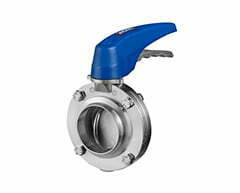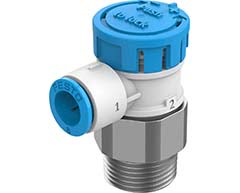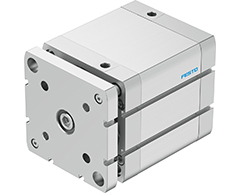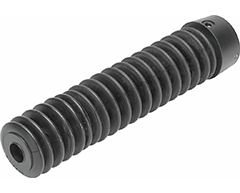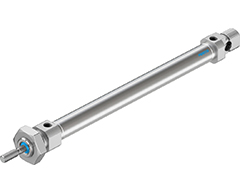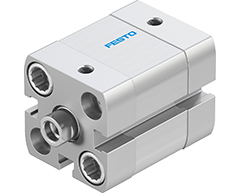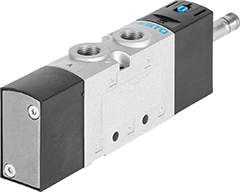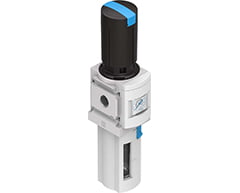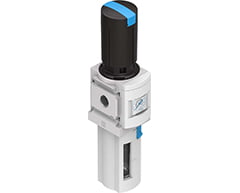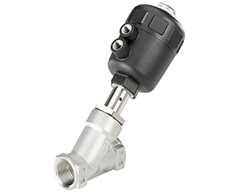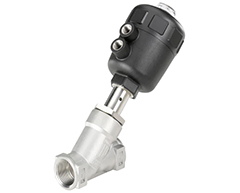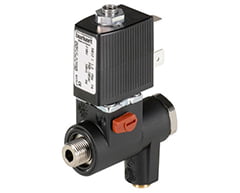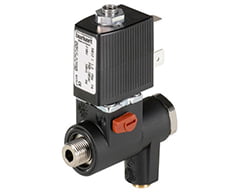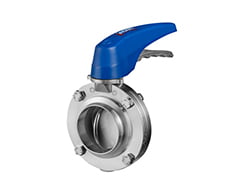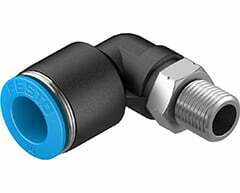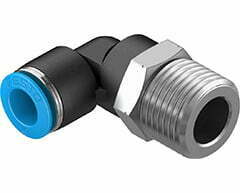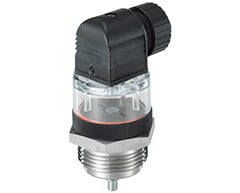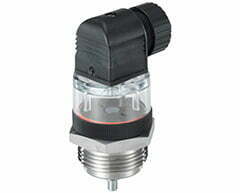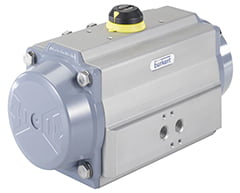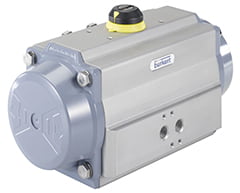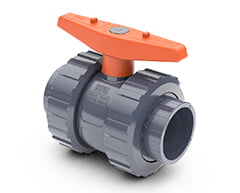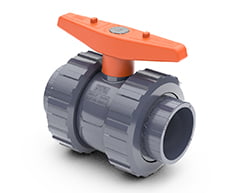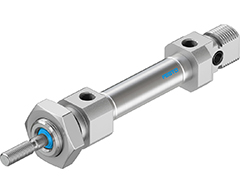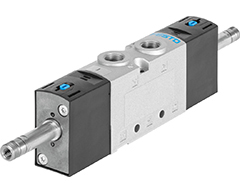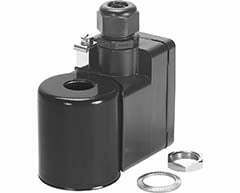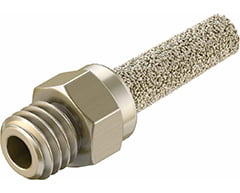Product Help
Help and Information
For the Brands that we sell
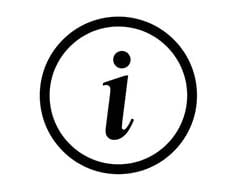
Festo
The MS series filter regulator
This series offers the widest range of filter regulator units, ideal for every application. With good particle separation at a high flow rate and good control characteristics with a low hysteresis. A return flow function and secondary exhaust are integrated as standard in the MS series.
The filter regulator can be installed as a module in service units thanks to the simple modular system of the MS series. Four sizes offer a wide flow range.
The housings are made of die-cast aluminium, the filter bowls are either made of metal or polycarbonate with a bowl guard and can be combined with all condensate drain systems.
The filter regulators MS-LFR can optionally be configured for use in potentially explosive areas of zones 1, 2, 21 and 22 as well as with UL approval.
-
 Festo filter regulator MS6-LFR-1/2-D7-ERV-AS, 529190Product on saleOriginal price was: £109.28.£72.00Current price is: £72.00. Exc. VAT £86.40 Inc. VAT
Festo filter regulator MS6-LFR-1/2-D7-ERV-AS, 529190Product on saleOriginal price was: £109.28.£72.00Current price is: £72.00. Exc. VAT £86.40 Inc. VAT -
 Festo filter regulator MS6-LFR, 530338£105.79 Exc. VAT £126.95 Inc. VAT
Festo filter regulator MS6-LFR, 530338£105.79 Exc. VAT £126.95 Inc. VAT
Festo
What is the purpose of directional control valves?
A directional control valve is used to change, open or close the flow of a medium in a hydraulic or pneumatic system. Compressed air or a hydraulic fluid is the fluid that is normally used. The task of a directional control valve is thus to release, change or block cross-sections in the valve for the liquid or gas (fluid).
Festo
What is a 3/2-way valve?
Directional control valves differ in terms of the number of ports and switching positions. A 3/2-way valve is used to switch a single-acting actuator, for example to switch a media flow and relieve the secondary side when the valve closes.
Festo 3/2-way valves are available in normally closed (NC) and normally open (NO) positions.
Festo
What are sensors?
A sensor is a component that converts a measured physical variable or a chemical effect into an analogue electrical output signal. The physical variable is an input signal that is not electrical, such as pressure, weight, temperature, radiation, magnetic flow, speed or another physical variable.
Burkert
Type 2000 Angle Seat Valves
Pneumatically operated 2/2 way angle seat valve CLASSIC
- Stainless steel or gunmetal housing with threaded, clamped or welded connection
- Long service life
- High flow rate
- Robust actuators with modular accessory program
The externally piloted angle seat valve is operated with a single or double acting piston actuator. The actuator is available in two different materials, depending on the ambient temperature. High flow rates are attained with the virtually straight flow path. The reliable self-adjusting packing gland provides high sealing integrity. These maintenance-free and robust valves can be retrofitted with a comprehensive range of accessories for position indication, stroke limitation or manual override.
-
 Burkert Type 2000 1/2″ BSP 2/2-way angle seat valve, 178603£247.00 Exc. VAT £296.40 Inc. VAT
Burkert Type 2000 1/2″ BSP 2/2-way angle seat valve, 178603£247.00 Exc. VAT £296.40 Inc. VAT -
 Burkert Type 2000 3/8″ BSP 2/2-way angle seat valve, 142613£247.00 Exc. VAT £296.40 Inc. VAT
Burkert Type 2000 3/8″ BSP 2/2-way angle seat valve, 142613£247.00 Exc. VAT £296.40 Inc. VAT
Burkert
Type 6012 – Plunger valve 3/2 way direct-acting
Valve 6012 is a direct-acting plunger valve. The stopper and plunger guide tube are welded together to enhance pressure resistance and leak-tightness. Various seal material combinations are available depending on the application. A Burkert-specific flange design (SFB) enables space-saving arrangement of valves on a manifold. Push-in fittings can be selected for flexible hose connection. A banjo connection with banjo bolt is the ideal solution for easy direct mounting on a pneumatic drive. Optional manual actuation enables quick commissioning and optimal maintenance. In combination with a cable plug in accordance with industry standard Form B or DIN EN 17301-803 Form C, the valves satisfy protection class IP65.
- Direct-acting, compact small-format valve with diameter of up to DN 1.6
- Screwed coil system
- Banjo threaded connection for direct mounting on pneumatic valves
- Simple and quick push-in, flange, or manifold installation
- Service-friendly manual override
-
 Burkert Type 6012 1/4″ BSP 3/2 Banjo Valve 24VAC, 552292£64.10 Exc. VAT £76.92 Inc. VAT
Burkert Type 6012 1/4″ BSP 3/2 Banjo Valve 24VAC, 552292£64.10 Exc. VAT £76.92 Inc. VAT -
 Burkert Type 6012 1/4″ BSP 3/2 Banjo Valve 110VAC, 552293£64.10 Exc. VAT £76.92 Inc. VAT
Burkert Type 6012 1/4″ BSP 3/2 Banjo Valve 110VAC, 552293£64.10 Exc. VAT £76.92 Inc. VAT
Inoxpa
Sanitary butterfly valves A480
Whether manually or automatically operated, can be used in most liquid product applications in the food-processing, pharmaceutical and chemical industries. The design of the butterfly valve between flanges A490 facilitates its installation and maintenance, allowing the extraction of the valve by means of 4 screws while the flanges welded to the installation remain fixed.
Sanitary butterfly valves can be operated automatically through an actuator (sanitary pneumatic butterfly valve, sanitary butterfly valve with pneumatic actuator) or manually with a handle. The handle blocks the valve in the “open” or “closed” position, although there are also other models with intermediate positions. The actuator transforms the axial movement of the piston into a 90º rotary movement which it transmits to the disc.
-
 Inoxpa 4″ RJT Butterfly Valve EPDM, VA486-110652101£264.00 Exc. VAT £316.80 Inc. VAT
Inoxpa 4″ RJT Butterfly Valve EPDM, VA486-110652101£264.00 Exc. VAT £316.80 Inc. VAT -
 Inoxpa 3″ RJT Butterfly Valve EPDM, VA486-110652076£158.00 Exc. VAT £189.60 Inc. VAT
Inoxpa 3″ RJT Butterfly Valve EPDM, VA486-110652076£158.00 Exc. VAT £189.60 Inc. VAT
Festo
Push-in fittings for pneumatics
Pneumatic push-in fittings are the standard on the pneumatic fittings market and are very widely used. What sets them apart is the easy release function for the tube, i.e. by pressing a releasing ring. These fittings are used with the standard O.D. tubing that is commonly available on the market.
-
 Festo Push-in L-fitting QSL-1/8-10, 190658£4.52 Exc. VAT £5.42 Inc. VAT
Festo Push-in L-fitting QSL-1/8-10, 190658£4.52 Exc. VAT £5.42 Inc. VAT -
 Festo Push-in L-fitting QSL-1/2-10, 190661£7.32 Exc. VAT £8.78 Inc. VAT
Festo Push-in L-fitting QSL-1/2-10, 190661£7.32 Exc. VAT £8.78 Inc. VAT
Festo
What is a pneumatic valve?
Like any valve, pneumatic valves have a control function to determine the amount of gas or compressed air that is allowed to flow through. With a pneumatic valve, the flow is controlled by a pneumatic signal.
Festo
What is the difference between electric and pneumatic valves?
Electric pilot-actuated valves or pneumatic valves can be used to control actuators. Electric pilot-actuated valves can be operated with 12 V, 24 V or 230 V. Common variants are, for example, 3/2- or 5/2-way valves.
Pneumatic valves, on the other hand, are actuated by compressed air.
Festo
What types of sensors are there?
There are different types of sensor, such as:
- Position transmitters
- Pressure and vacuum sensors
- Flow sensors
- Cylinder sensors
- Inductive proximity switches
- Opto-electrical sensors
Burkert
Type 1060 Electrical position feedback for pneumatically operated process valves
The Type 1060 is designed for integrated mounting on CLASSIC Series process valves. Due to its simple and a very compact design, the position feedback can easily be mounted on a valve. Depending on the switch type of the electrical position feedback, the positions of the valve are reported electrically: open, closed.
- Fast and easy installation
- Compact design
-
 Burkert Type 1060 Optical Position Indicator 100mm, 701516£75.10 Exc. VAT £90.12 Inc. VAT
Burkert Type 1060 Optical Position Indicator 100mm, 701516£75.10 Exc. VAT £90.12 Inc. VAT -
 Burkert Type 1060 Optical Position Indicator 80mm, 701515£65.20 Exc. VAT £78.24 Inc. VAT
Burkert Type 1060 Optical Position Indicator 80mm, 701515£65.20 Exc. VAT £78.24 Inc. VAT
Burkert
Type 2051 Pneumatic rotary actuator
The Type 2051 pneumatic rotary actuators are low maintenance single or double acting pneumatic linear piston actuators where linear movement of the piston due to the pilot air causes a 90º rotation of the connected valve. Actuator-valve coupling is made via a universal ISO 5211 mechanical interface. The status of ball or butterfly valve can be monitored via the feedback switches of 1061. Moreover the actuator can be used as modulating control actuator by the addition of Burkert’s range of Side Control positioners 8792/3.
- Modular program for mounting of quarter turn valves such as ball valves and butterfly valves
- NAMUR and ISO 5211 interfaces
- Position feedback with Type 1061 possible (also for Ex-applications)
- Side Control Positioner ready – Type 8792/3
- ATEX 2014/34/EU
-
 Burkert Type 2051 Actuator Double Acting Size 100, 214525£213.00 Exc. VAT £255.60 Inc. VAT
Burkert Type 2051 Actuator Double Acting Size 100, 214525£213.00 Exc. VAT £255.60 Inc. VAT -
 Burkert Type 2051 Actuator Double Acting Size 220, 214527£365.00 Exc. VAT £438.00 Inc. VAT
Burkert Type 2051 Actuator Double Acting Size 220, 214527£365.00 Exc. VAT £438.00 Inc. VAT
Hidroten
Bidirectional ball valves
The range of bidirectional ball valves are distinguishable by their threaded Teflon adaptor which allows its installation in any direction and provides a uniform operation torque. It turns into the perfect valve for industrial applications as it avoids accidental discharges due to a wrong installation.
The handle of bidirectional valves is not only used to close or open the valve, but they can also be used as a wrench to adjust the Teflon adaptor and thus it can adjust the torque.
-
 Hidroten uPVC Manual Ball Valve 3/4″ 111D782, PVCMBV-34£20.00 Exc. VAT £24.00 Inc. VAT
Hidroten uPVC Manual Ball Valve 3/4″ 111D782, PVCMBV-34£20.00 Exc. VAT £24.00 Inc. VAT -
 Hidroten uPVC Manual Ball Valve 3″ 111D788, PVCMBV-3£154.00 Exc. VAT £184.80 Inc. VAT
Hidroten uPVC Manual Ball Valve 3″ 111D788, PVCMBV-3£154.00 Exc. VAT £184.80 Inc. VAT

